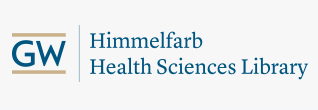Prognostic models of abdominal wound dehiscence after laparotomy
Document Type
Journal Article
Publication Date
1-1-2003
Journal
Journal of Surgical Research
Volume
109
Issue
2
DOI
10.1016/S0022-4804(02)00097-5
Abstract
Background. Portions of the prospective, multi-institutional National Veterans Affairs Surgical Quality Improvement Program were used to develop and validate a perioperative risk index to predict abdominal wound dehiscence after laparotomy. Methods. Perioperative data from 17,044 laparotomies resulting in 587 (3.4%) wound dehiscences performed at 132 Veterans Affairs Medical Centers between October 1, 1996, and September 30, 1998, were used to develop the model. Data from 17,763 laparotomies performed between October 1, 1998, and September 30, 2000, resulting in 562 (3.2%) dehiscences were used to validate the model. Models were developed using multivariable stepwise logistic regression with preoperative, intraoperative, and postoperative variables entered sequentially as independent predictors of wound dehiscence. The model was used to create a scoring system, designated the abdominal wound dehiscence risk index. Results. Factors contributing significantly to the model and their point values (in parentheses) for the risk index include CVA with no residual deficit (4), history of COPD (4), current pneumonia (4), emergency procedure (6), operative time greater than 2.5 h (2), PGY 4 level resident as surgeon (3), clean wound classification (-3), superficial (5), or deep (17) wound infection, failure to wean from the ventilator (6), one or more complications other than dehiscence (7), and return to OR during admission (-11). Scores of 11-14 are predictive of 5% risk of dehiscence while scores of >14 predict 10% risk. Conclusions. This abdominal wound dehiscence risk index identifies patients at risk for dehiscence and may be useful in guiding perioperative management. © 2003 Elsevier Science (USA).
APA Citation
Webster, C., Neumayer, L., Smout, R., Horn, S., Daley, J., Henderson, W., Khuri, S., Healey, N., Miller, C., Solar, L., Gibbs, J., Krasnicka, B., Thakkar, B., Denwood, R., Grover, F., Johnson, R., Shroyer, L., Ludwig, S., Harbison, A., Monosky, A., Montali, M., Musgrove, S., Aust, J., Bass, B., Bishop, M., Demakis, J., Fabri, P., Fink, A., Hammermeister, K., McDonald, G., Roswell, R., Spencerry, J., & Turnage, R. (2003). Prognostic models of abdominal wound dehiscence after laparotomy. Journal of Surgical Research, 109 (2). http://dx.doi.org/10.1016/S0022-4804(02)00097-5

